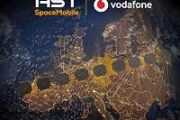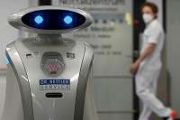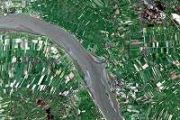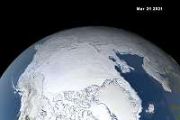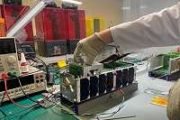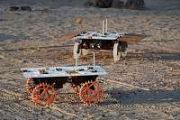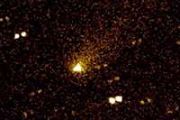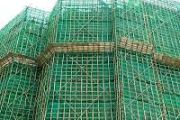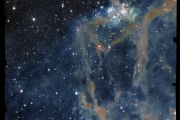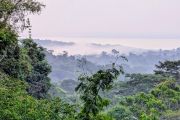
Copernical Team
Mysterious gamma-ray emitting bubbles around the center of our Galaxy explained
 A scientist from Tokyo Metropolitan University has shown that large gamma-ray emitting bubbles around the center of our Galaxy were produced by fast blowing outward winds and the associated "reverse shock." Numerical simulations successfully reproduced the temperature profile observed by an X-ray telescope. Such outflows have been observed in other galaxies; this finding suggests similar winds m
A scientist from Tokyo Metropolitan University has shown that large gamma-ray emitting bubbles around the center of our Galaxy were produced by fast blowing outward winds and the associated "reverse shock." Numerical simulations successfully reproduced the temperature profile observed by an X-ray telescope. Such outflows have been observed in other galaxies; this finding suggests similar winds m A Scuff for the New Year: Sols 3699-3702
 Curiosity has executed two out of the ten sols we planned on Wednesday to cover the rover's activities through the holidays, so the three sols we planned today (sols 3699-3671) won't actually execute on Mars for several days.
The activities we included in the remaining eight sols of Wednesday's ten-sol plan don't involve any driving or arm activities, so we picked up today's planning knowi
Curiosity has executed two out of the ten sols we planned on Wednesday to cover the rover's activities through the holidays, so the three sols we planned today (sols 3699-3671) won't actually execute on Mars for several days.
The activities we included in the remaining eight sols of Wednesday's ten-sol plan don't involve any driving or arm activities, so we picked up today's planning knowi Exotic clasts in Chang'e-5 samples indicate unexplored terrane on moon
 The Chang'e-5 mission touched down in the Mons Rumker region of the northern Oceanus Procellarum of the Moon and returned 1.731 kg of lunar regolith.
Recognizing exotic clasts (i.e., non-Chang'e-5 locally derived materials) in the Chang'e-5 regolith could provide critical information about the lithological diversity and regolith gardening process in the young mare region of the Moon.
The Chang'e-5 mission touched down in the Mons Rumker region of the northern Oceanus Procellarum of the Moon and returned 1.731 kg of lunar regolith.
Recognizing exotic clasts (i.e., non-Chang'e-5 locally derived materials) in the Chang'e-5 regolith could provide critical information about the lithological diversity and regolith gardening process in the young mare region of the Moon. Station crew wraps up a busy year as Soyuz review continues
 Research and maintenance activities aboard the International Space Station continue into the new year while engineers and managers discuss Soyuz capabilities and potential next steps in response to the Soyuz MS-22's external cooling loop leak.
The Expedition 68 crew remains in good condition, performing a variety of maintenance and research activities and looks forward to some time off on
Research and maintenance activities aboard the International Space Station continue into the new year while engineers and managers discuss Soyuz capabilities and potential next steps in response to the Soyuz MS-22's external cooling loop leak.
The Expedition 68 crew remains in good condition, performing a variety of maintenance and research activities and looks forward to some time off on Latest launch marks 64th mission for China in 2022
 China launched a Long March 3B carrier rocket on Thursday afternoon to transport an experimental satellite into space, completing the busiest year in terms of launch numbers for the country's space industry.
The rocket blasted off at 12:43 pm at the Xichang Satellite Launch Center in Southwest China's Sichuan province and then deployed the Shiyan 10-02 experimental satellite into a preset
China launched a Long March 3B carrier rocket on Thursday afternoon to transport an experimental satellite into space, completing the busiest year in terms of launch numbers for the country's space industry.
The rocket blasted off at 12:43 pm at the Xichang Satellite Launch Center in Southwest China's Sichuan province and then deployed the Shiyan 10-02 experimental satellite into a preset Artemis I Orion spacecraft returns to Kennedy Space Center
 After its 1.4-million-mile mission beyond the Moon and back, the Orion spacecraft for the Artemis I mission arrived back at NASA's Kennedy Space Center Dec. 30. The capsule splashed down in the Pacific Ocean on Dec. 11 and was transported by truck across the country from Naval Base San Diego in California to Kennedy's Multi Payload Processing Facility in Florida.
Now that Orion is back at
After its 1.4-million-mile mission beyond the Moon and back, the Orion spacecraft for the Artemis I mission arrived back at NASA's Kennedy Space Center Dec. 30. The capsule splashed down in the Pacific Ocean on Dec. 11 and was transported by truck across the country from Naval Base San Diego in California to Kennedy's Multi Payload Processing Facility in Florida.
Now that Orion is back at NASA and HAARP conclude asteroid experiment
 A powerful transmitter in remote Alaska sent long wavelength radio signals into space Tuesday with the purpose of bouncing them off an asteroid to learn about its interior.
The asteroid, 2010 XC15, is estimated to be about 500 feet across and is passing by Earth at two lunar distances, which is twice the distance between the Earth and the moon.
Results of Tuesday's experiment at the
A powerful transmitter in remote Alaska sent long wavelength radio signals into space Tuesday with the purpose of bouncing them off an asteroid to learn about its interior.
The asteroid, 2010 XC15, is estimated to be about 500 feet across and is passing by Earth at two lunar distances, which is twice the distance between the Earth and the moon.
Results of Tuesday's experiment at the Planet to launch 36 SuperDove satellites with SpaceX
 Planet Labs PBC (NYSE: PL), a leading provider of daily data and insights about Earth, has announced plans to launch 36 of its SuperDove satellites, Flock 4y, on a SpaceX Falcon 9 rocket no earlier than Tuesday, January 3, 2023 at 9:56 a.m. ET (14:56 UTC). Flock 4y is planned to launch on SpaceX's Transporter-6 mission from Space Launch Complex 40 in Cape Canaveral, Florida.
These 36 Super
Planet Labs PBC (NYSE: PL), a leading provider of daily data and insights about Earth, has announced plans to launch 36 of its SuperDove satellites, Flock 4y, on a SpaceX Falcon 9 rocket no earlier than Tuesday, January 3, 2023 at 9:56 a.m. ET (14:56 UTC). Flock 4y is planned to launch on SpaceX's Transporter-6 mission from Space Launch Complex 40 in Cape Canaveral, Florida.
These 36 Super SPORT and petitSat cubesats to shed light on space weather disturbances
 Two CubeSats, or small satellites, are on a quest to provide insight on space weather disturbances and the subsequent impact on communication signals. The dynamic duo, the Plasma Enhancements in the Ionosphere-Thermosphere Satellite (petitSat) and Scintillation Prediction Observations Research Task (SPORT), arrived at the International Space Station on Nov. 27, 2022, as part of SpaceX's 26th com
Two CubeSats, or small satellites, are on a quest to provide insight on space weather disturbances and the subsequent impact on communication signals. The dynamic duo, the Plasma Enhancements in the Ionosphere-Thermosphere Satellite (petitSat) and Scintillation Prediction Observations Research Task (SPORT), arrived at the International Space Station on Nov. 27, 2022, as part of SpaceX's 26th com University students test futuristic flight hardware in NASA facility
 The scene inside a NASA test facility sometimes looks a lot like the set of a science fiction movie. That's certainly the case with a 1 megawatt electric machine with an integrated power electronics system university students are now testing with NASA support.
This innovative hybrid electric technology isn't fictional. It's reality, and it could someday help single-aisle commercial aircraf
The scene inside a NASA test facility sometimes looks a lot like the set of a science fiction movie. That's certainly the case with a 1 megawatt electric machine with an integrated power electronics system university students are now testing with NASA support.
This innovative hybrid electric technology isn't fictional. It's reality, and it could someday help single-aisle commercial aircraf 




